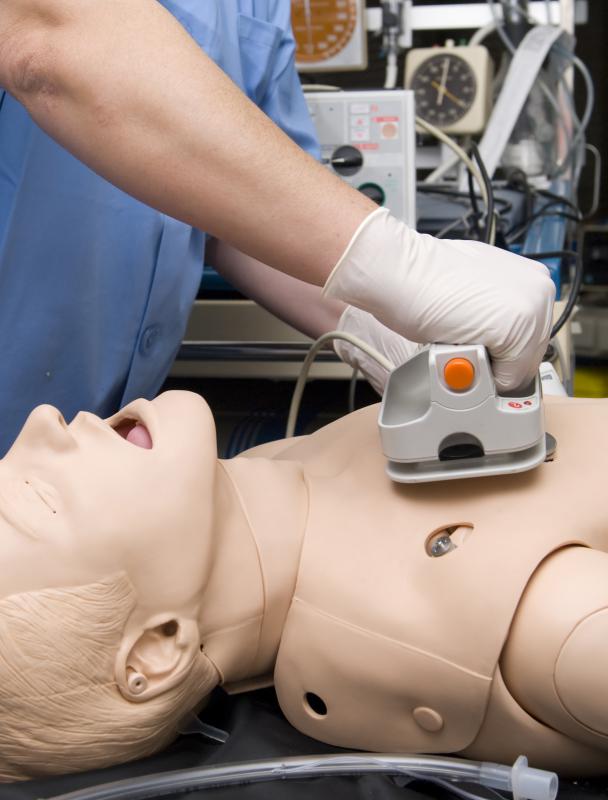At WiseGEEK, we're committed to delivering accurate, trustworthy information. Our expert-authored content is rigorously fact-checked and sourced from credible authorities. Discover how we uphold the highest standards in providing you with reliable knowledge.
What are the Different Types of AED Training?
The different types of automated external defibrillator (AED) training might be classified according to how the instruction in the use of the medical device is delivered or according to the different types of actual training itself. AED training is available online, as a traditional course offered by various organizations, as part of first aid training and as part of healthcare-provider level cardiopulmonary (CPR) training. When speaking of the various types of AED training, there is training for using the medical device to defibrillate the heart of an adult and training for the resuscitation of children. Training can take place with a semi-automatic AED, also known as a shock advisory defibrillator, or with a fully automatic unit. It can also cover how to maintain the device and how to coordinate AED use with CPR.
Among the things learned in any type of competent AED training are the steps that must be taken to operate the unit, such as getting it turned on and, if necessary, changing it to give instructions in a language that the operator can understand. Students also learn how to properly attach the pads to a patient, how to press the analyze button and about the need to ensure that no one is touching the patient during the analysis. AED training with fully automatic units does not require much work on the part of the operator after the device is attached to the victim. Semiautomatic units require a button to be pushed if a shock is advised.

Healthcare providers such as emergency medical technicians (EMTs) always receive a combination of CPR and AED training because they are often involved in the coordination of two-person CPR and AED use in the field. This type of training focuses on the blending of both lifesaving interventions to give the victim the best chances of revival. For example, students learn when to defibrillate first and when to begin CPR first. They also learn about the non-shockable rhythms such as pulseless electrical activity (PEA) and asystole — times when an AED is of no use.

It might be said that the AED training that healthcare providers receive differs from the training laypeople receive because of the rules that EMTs and paramedics who work in the field must follow regarding decisions of when to transport victims to the hospital or a specialized care facility. This type of AED training also covers contraindications for the use of these defibrillators. There are times when the device should not be used, such as some situations involving trauma that have caused life-threatening bleeding and in cases of hypothermia.
AS FEATURED ON:
AS FEATURED ON:












Discuss this Article
Post your comments